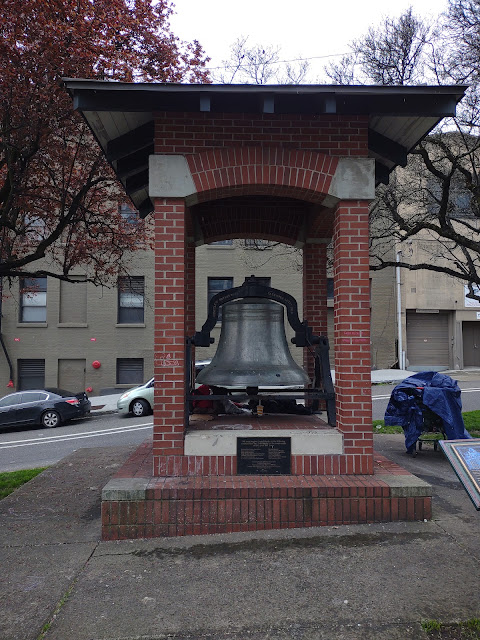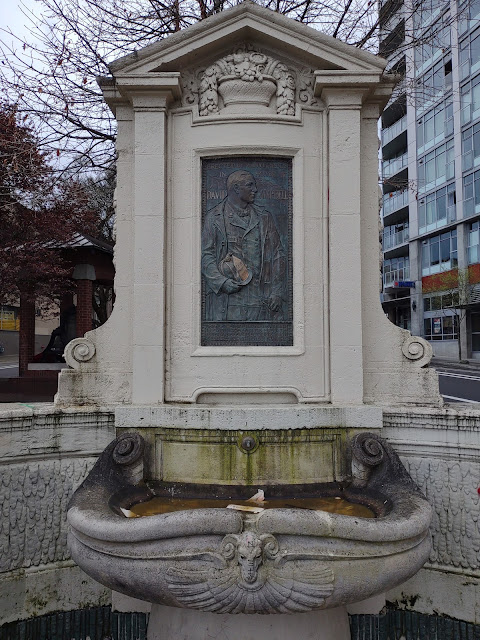 |
| (Hartshorne Plunkard Architecture) |
One of the oddest chapters in Portland architectural
landmark history may start unfolding soon to transform the 1909 former First Church of
Christ Scientist into a contemporary two-building hotel complex.
There are questions galore about the proposed development,
but perhaps the most solid “fact” is that the owners of what is now called the
Northwest Neighborhood Cultural Center may have no option other than to sell
the building and an adjoining lot for $4.5 million to a Nevada development
company.
Regrettably, no other entity has stepped forward to save the
former church that was converted to a neighborhood center housing non-profit
entities back in 1977. Under the
proposed deal, a new five-story hotel with 80 rooms would be built facing on NW
19th Avenue and the old church would be converted to house an additional 18
hotel rooms and unspecified hotel amenities.
Proceeds from the sale would be placed in a trust fund that
would provide annual payouts for civic-minded projects in Northwest Portland’s
Alphabet National Historic District. The
500-plus “owners” of the historic building are to be presented details of the
sale for potential approval on April 26.
Whether they will want more details or ask for more time is not known.
Given the complexity of the proposal, be assured that it
contains elements of “good news” as well as elements of “not so good news.” Here are some that come to mind so far:
.jpg) |
| As it stands today |
Good: The roof, dome, portico and three public facades of
the historic building would be saved, and ostensibly restored under guidelines
approved the Portland Historic Landmarks Commission. Believed to have been designed by a prominent
Chicago architect, Solon Spencer Beman, the historic shape of the Beaux-Arts
design would continue as a prominent city landmark.
Not so good: Louis Sullivan’s famous architectural dictum
from 1896, “form follows function,” suggests that the shape and design of a
building should indicate its function.
Given its style, this building screams “church,” or, without its
art-glass windows, perhaps even “government building.” Nothing about it suggests “hotel.” A modest means of atonement might be a plaque
somewhere near its front that explains its history.
Good: The firm that produced the preliminary
views, Hartshorne Plunkard Architecture of Chicago, has a track record of
working on historic buildings. It is
currently working on another Portland project revamping the old Troy Laundry
building and adding an adjacent residential building.
Not so good: Founders Developments, the Las Vegas
builder and proposed buyer, appears to have no track record of working on old
buildings. The firm’s website talks
about it being in the business of high-end housing, which makes one wonder why
it is venturing into a highly challenging project as a hotel.
Good: A primary difficulty in preserving the old church is
its vulnerability to earthquakes. The
interior no doubt will be gutted to create a new steel frame tied to the roof
and remaining walls. This complicated engineering feat should assure survival in a major quake.
Not so good: That means little, if anything, if anything
will remain from the historic interior. It
will be a disappointment to old building lovers who often value
interior design as much as the exterior.
Preliminary images suggest that the art-glass windows will be retained,
which is a plus. Otherwise, we can think
of it as a Cracker Jack box with no treats inside. (The Landmarks Commission has no jurisdiction over the building's interior.)
Good: The shape of the new hotel to be built adjacent looks like
a pleasing addition to the historic context of the Alphabet District;
Not so good: The light color and undisclosed exterior
materials as seen in the preliminary drawings soon would become water-streaked
in Portland’s climate. If the exterior
is stucco, drip flashings can interrupt the pleasing smooth look. The Portland Historic Landmarks Commission no
doubt will pay close attention to these details.
Since a sale is likely to be approved at some point, the
best a preservationist can say is hang on and hope for an interesting ride, bumpy
though it may prove to be.
-----Fred Leeson
Join Building on History’s mailing list by writing “add me”
to fredleeson@hotmail.com








.jpg)



